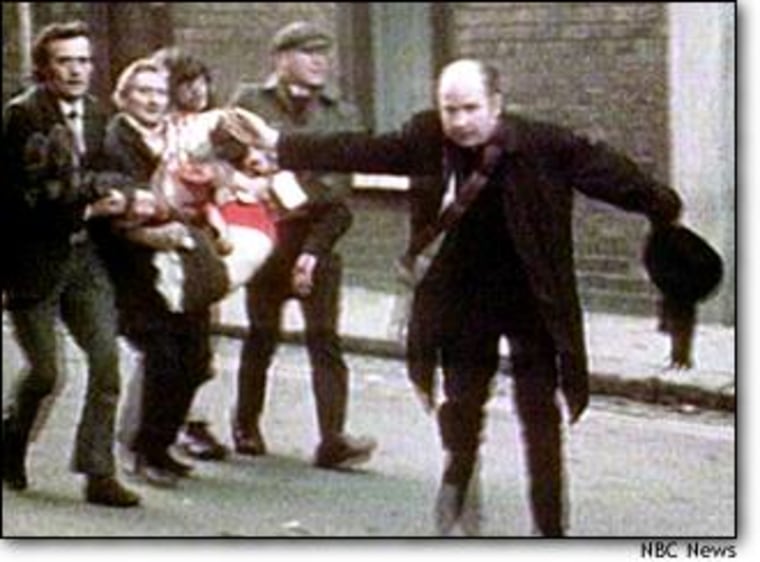Londonderry, the final stop on the border before Northern Ireland plunges into the North Atlantic, is an ancient walled city of 95,000 people who live mainly on its outskirts in sprawling suburbs of public housing. At the height of the Troubles, when the IRA’s bombing campaign was at its most intense, 75 percent of the buildings in the city had been damaged or destroyed. Yet today, Londonderry has been beautifully and thoughtfully rebuilt and is a vibrant cultural center.
For years Londonderry, or Derry, as it is known by its predominantly Catholic population, was famous only for the devastating events of Bloody Sunday, when British troops opened fire on unarmed civil rights protesters and killed 13. That day in January 1972 has come to be seen as the moment that sparked almost three decades of political violence.
Now, though, Londonderry has risen like a phoenix from the ashes of its bloody past with the help of European Union grants aimed at cementing the peace after warring paramilitary groups agreed to a cease-fire in 1994.
But most of the credit for Londonderry’s transformation is due to the pioneering spirit of its people. In 1975, with the help of a local businessman, Paddy Doherty, residents set up the Inner City Trust and since then have nearly rebuilt the city. The trust is led by the Catholic and Protestant bishops of the city, an example of the cooperation that has emerged after years of sectarian violence.
Unrest still looms each summer at the time of the militant Protestant Apprentice Boys’ parade around the city’s walls, but the city is generally peaceful now.
Londonderry has so transformed itself that it has become a destination for cruise ships in the summer.
Today the city is a center of arts and culture. It boasts a brand-new theater and a Verbal Arts Center dedicated to nurturing a local oral and literary tradition that stretches from St. Columbanus to the 1995 Nobel laureate Seamus Heaney. The city’s dynamism is powered by its young population — 50 percent are under 30 — many of whom have channeled their energies into the arts.
The Nerve Center, a multi-media showcase, is a mecca for musicians, photographers and film-makers and produced the Oscar-nominated short film “Dance Lexie Dance.” The center houses the Foyle Film Festival, an innovative event held each November that has brought in luminaries of the European cinema including Kenneth Branagh and Wim Wenders.
Its director, Shauna Kelpie, believes Londonderry’s location on the border in the remote northwest is the reason for its pioneering spirit. “Up here, people have been left to their own devices and if they want to do something, they do it,” says Kelpie. “They just have that spirit. And I suppose the freedom of the border has helped that.”
Despite Londonderry’s transformation, its residents are still haunted by the Troubles. In March last year, the British government opened a new inquiry into the events of Bloody Sunday to try to establish once and for all the role of British troops in the massacre. It promises to be a long, drawn-out affair, but it offers hope that some of the injustices of the past 30 years can be laid to rest.
